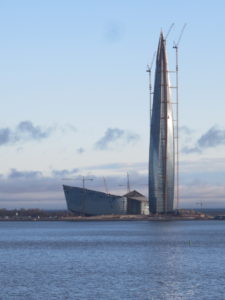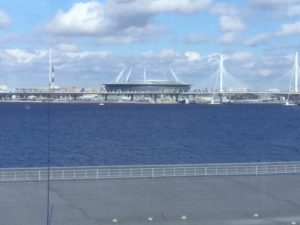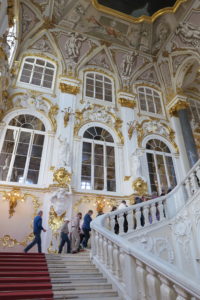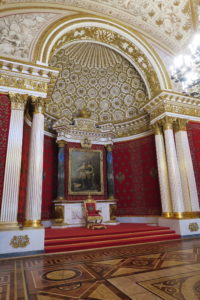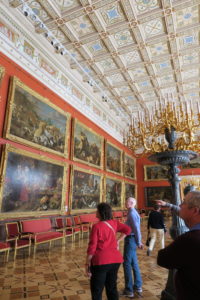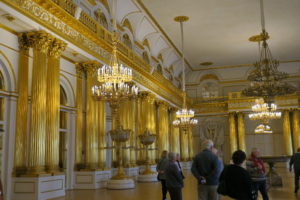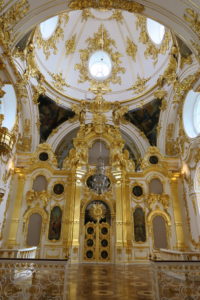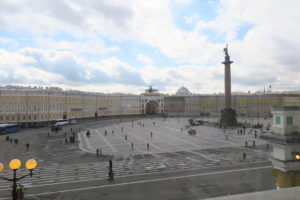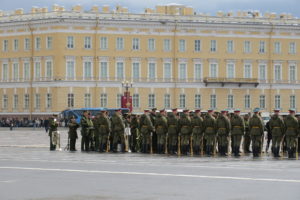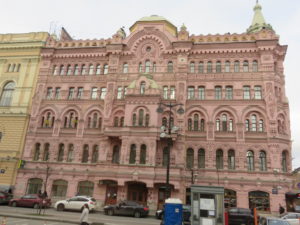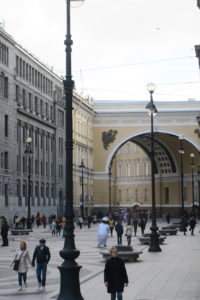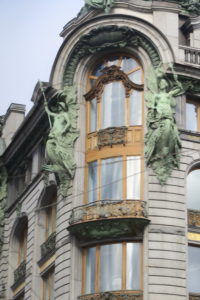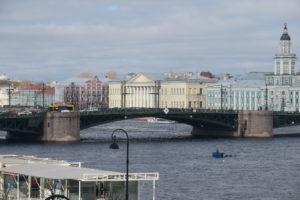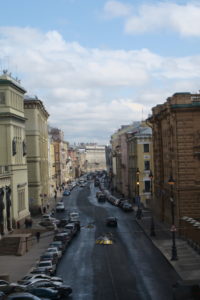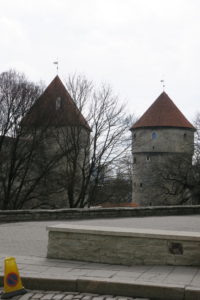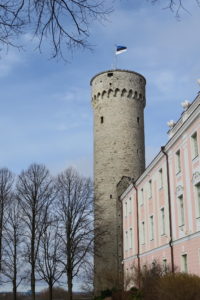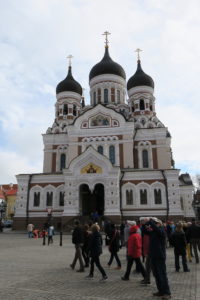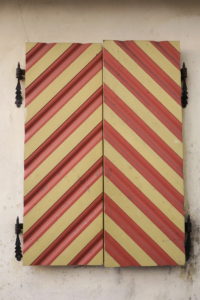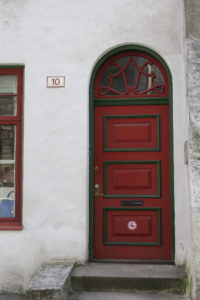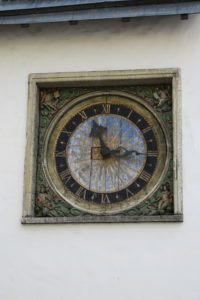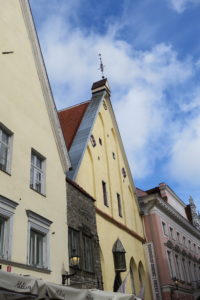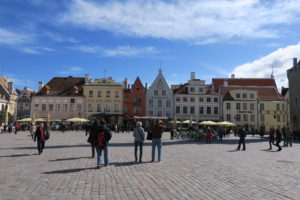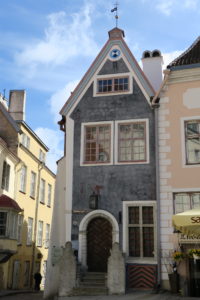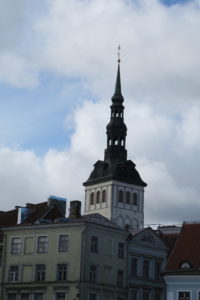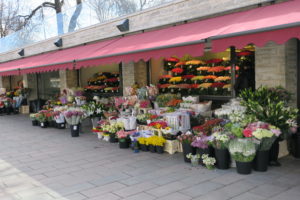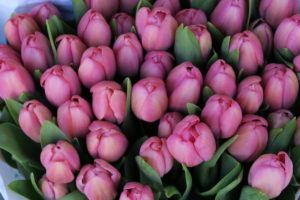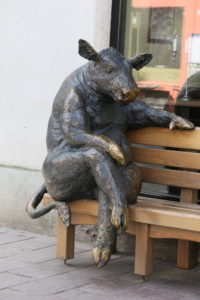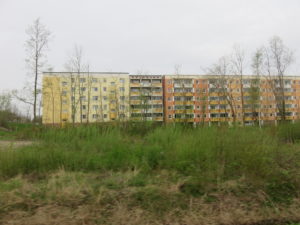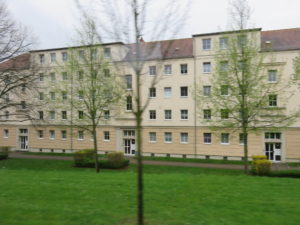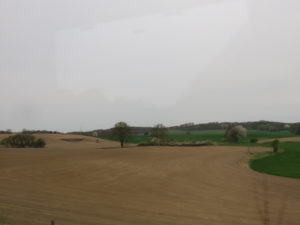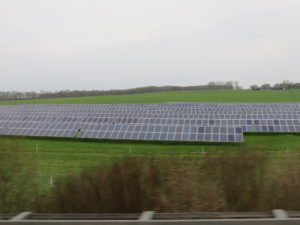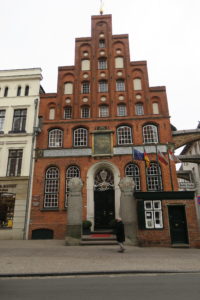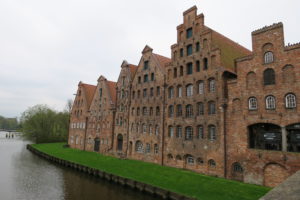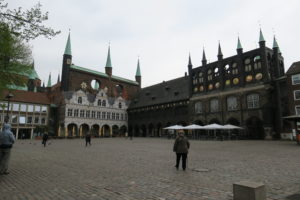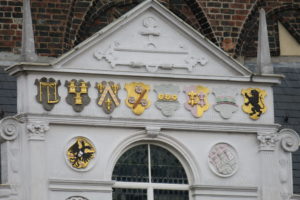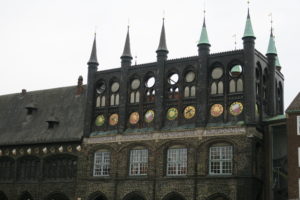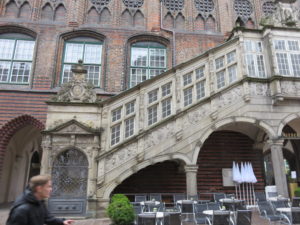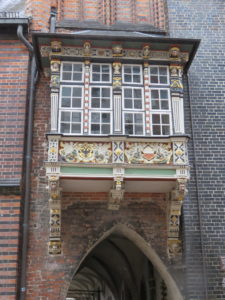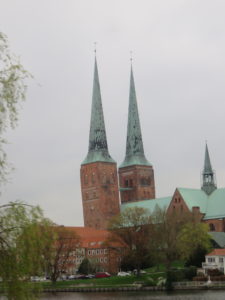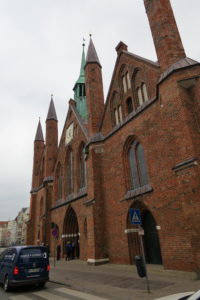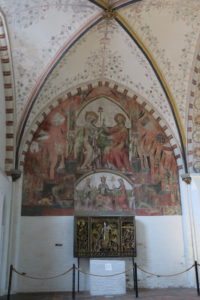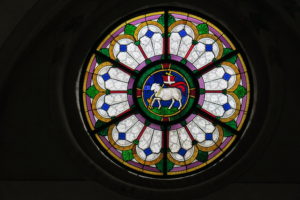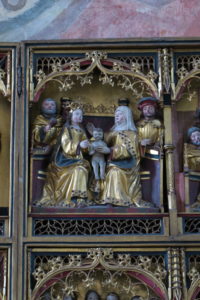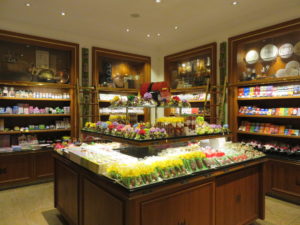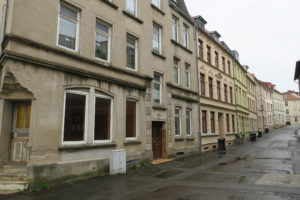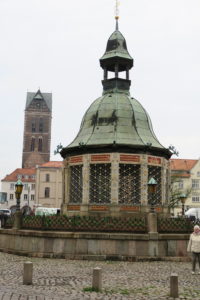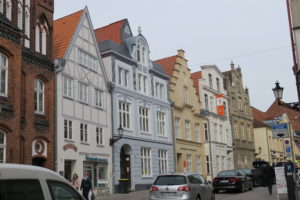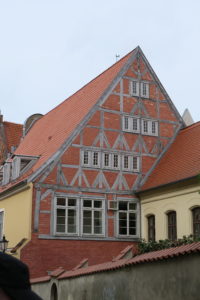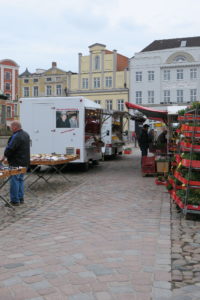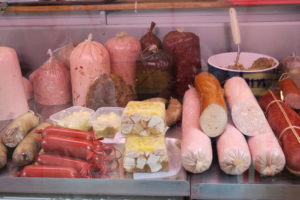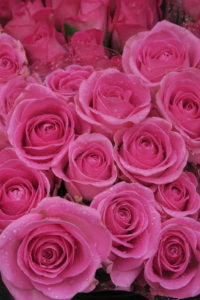We started our Saturday with a canal cruise. More accurately, it was a river and canal cruise. Saint Petersburg has three rivers—the Neva, the Fontanka, and the Moyke, and then there are canals that link up the rivers and islands.
What a great way to see any water-oriented city. We sat top side. Colder, but way better views—that is, if you don’t count the selfie sticks and the insatiable need for some of our fellow cruisers to video everything. Sigh.
There was a young man who ran from bridge to bridge to wave to us as we passed under each bridge. Usually, he just made a point of us seeing him, but at one of the bridges he did a backflip to much applause. Apparently, he does this run-wave-run-wave routine all the time, and he hopes to get tips from canal trippers or a payment for posing for a picture with him. Unusual. He certainly doesn’t need any other exercise program. We cruised quite a distance, and he was with us from start to finish. And we weren’t exactly the only canal boat on the water.

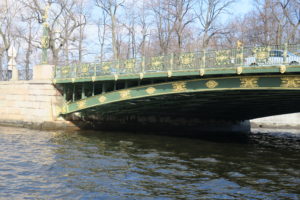
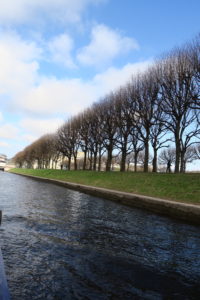
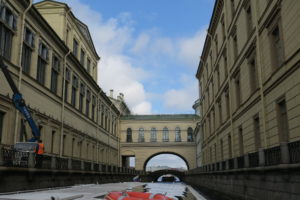
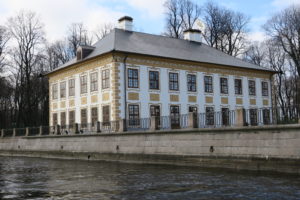
Peter and Paul Fortress, at the mouth of the Neva River.
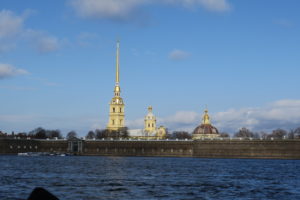
After cruising for an hour, we made the first of two stops: the Church on Spilled Blood, built on the spot where Czar Alexander II was assassinated in 1881. This striking, colorful, onion-domed church is considered a must visit in Saint Petersburg. Unfortunately, some of its exterior exuberance was covered in scaffolding and netting. Still, it’s quite a sight.
When we stepped inside, it was hard to suppress our gasps. It is covered from top to bottom in mosaics. In spite of the crazy, crowded space, which made it very challenging to drink in the beauty, it was an incredible place to see.
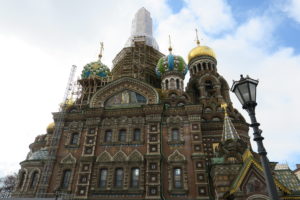
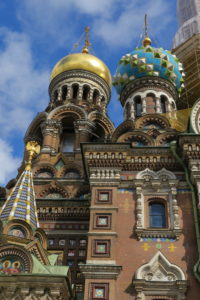
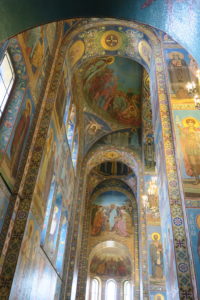
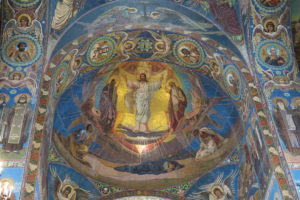
After this visit, we went to St. Isaac’s Cathedral, with its gold dome. It is considered the leading church in Russian Orthodoxy and one of the largest churches in Christendom.
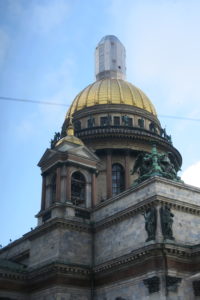
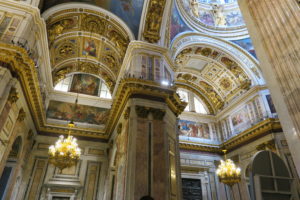
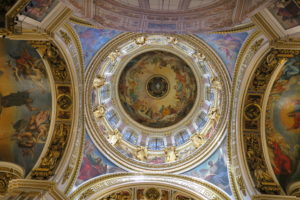
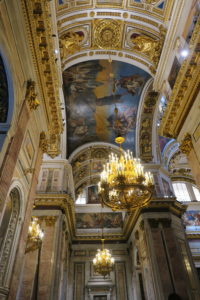
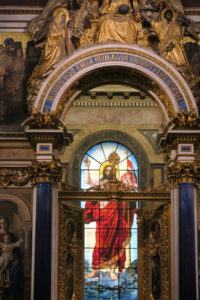
This church was a bit less crowded, and I thought it was even more beautiful.
We know we barely scratched the surface of Saint Petersburg, but we were wowed by what we saw. It is a big, big city, and traffic is wildly congested. It takes forever to get from place to place. But, my, it does contain some real jewels, and we’re glad we got a chance to see even just a bit.
